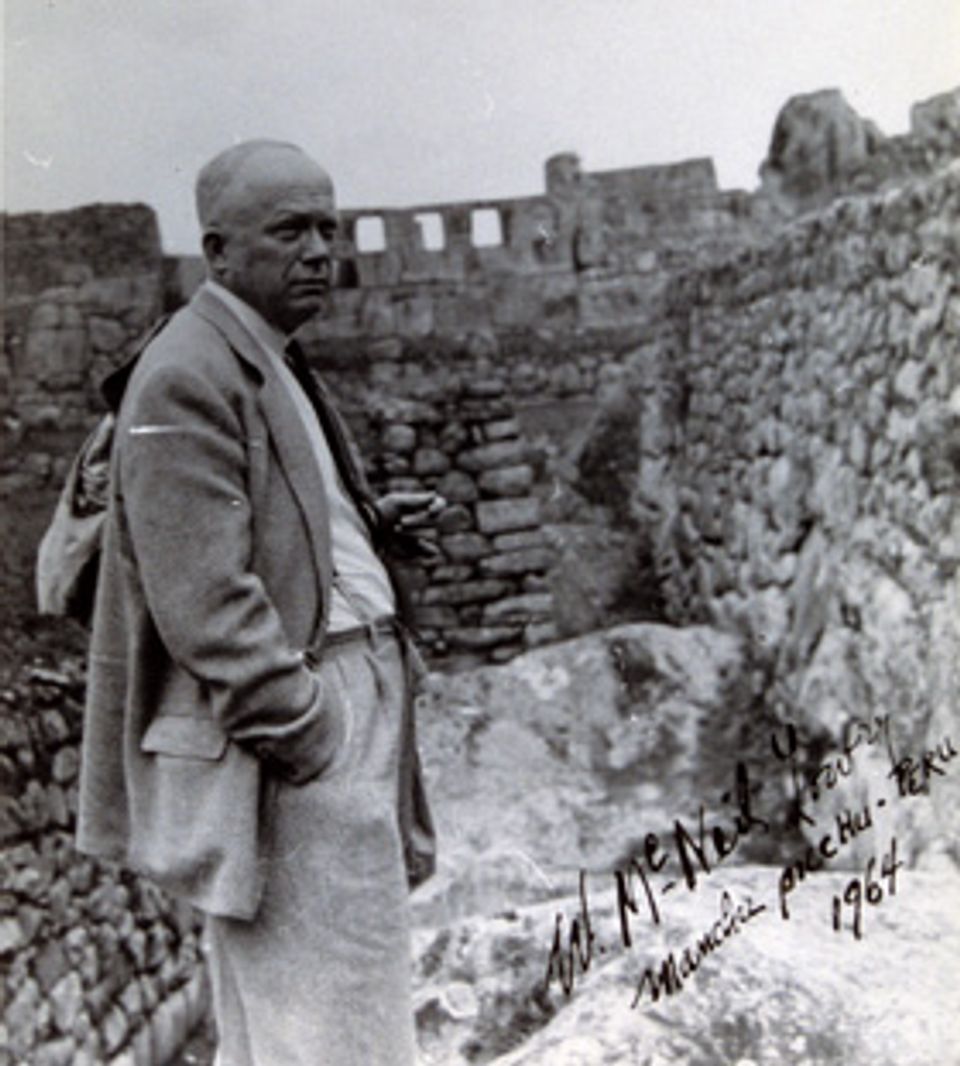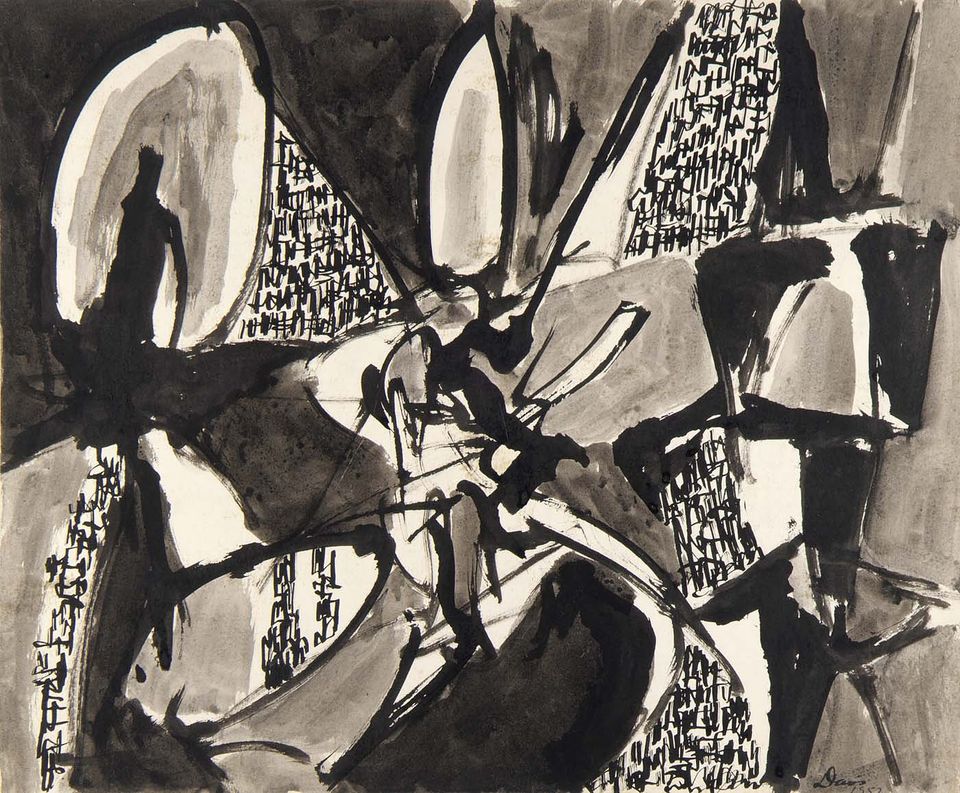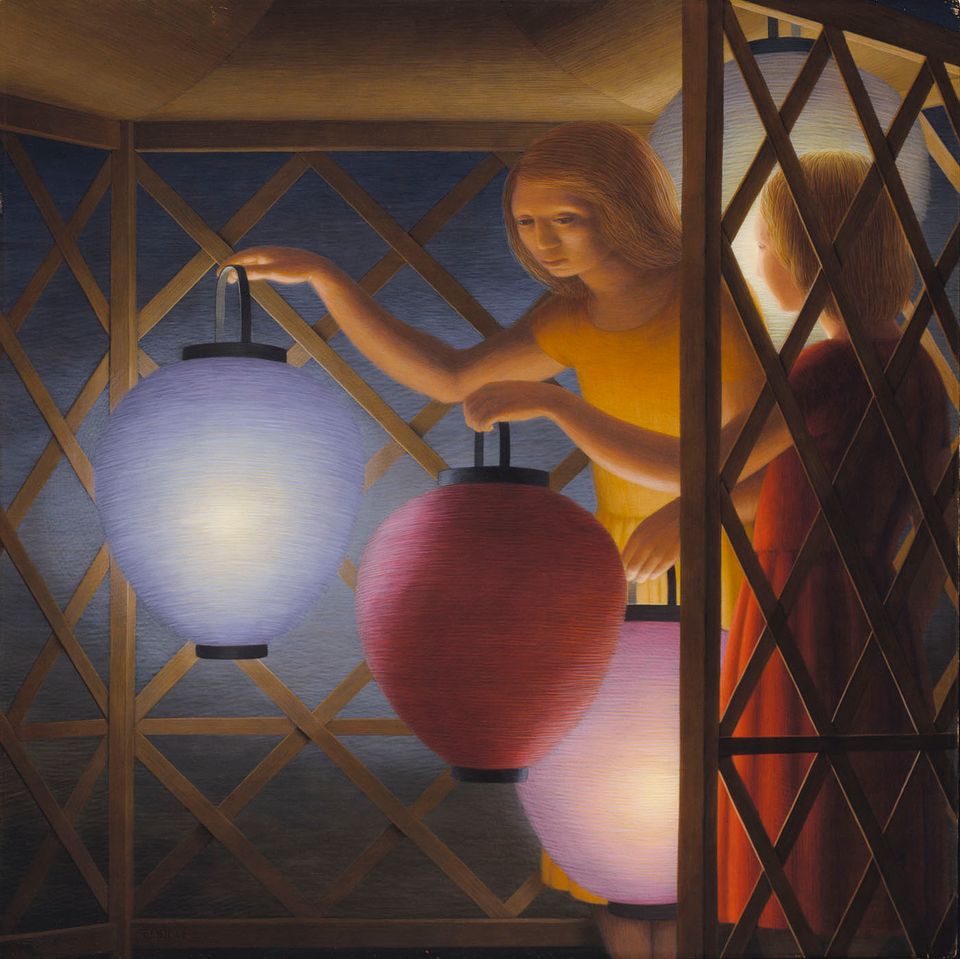Theodore Roszak

- Also known as
- Theodore J. Roszak
- Born
- Poznań, Poland
- Active in
- Chicago, Illinois, United States
- Biography
After art school, Roszak received a fellowship to go to Europe in 1929. He set up a studio in Prague, and on trips to France, Germany, and Austria learned of Purism and Constructivism and became fascinated with the Bauhaus principles of the integration of art and life. After two years, Roszak returned to New York and in 1938 taught at the Design Laboratory, an experiment to transplant Bauhaus principles and methods to the United States. Between 1936 and 1945, Roszak created constructions—three-dimensional and wall-mounted sculpture in which he eliminated all subject matter other than the uncompromising geometric form of the pieces themselves. Around 1945, however, Roszak abandoned Constructivism because it reflected a view of the world he took to be falsely harmonious. Seeking to reintegrate content into his work, Roszak began welding and discovered that surface effects achieved by accident suggested a world of meaningful associations. The forms of his late work, he said, "are meant to be blunt reminders of primordial strife and struggle, reminiscent of those brute forces that not only produced life, but in turn threatened to destroy it."
Virginia M. Mecklenburg Modern American Realism: The Sara Roby Foundation Collection (Washington, D.C.: Smithsonian Institution Press for the National Museum of American Art, 1987)
- Luce Artist Biography
Theodore Roszak and his family emigrated from Poland two years after he was born. When he was thirteen years old, Roszak won a national art contest sponsored by The Chicago Herald-Examiner. This encouraged him to take evening classes at the Art Institute of Chicago while still in high school. Roszak later went to New York to study painting with Charles Hawthorne and then to Europe, where he was influenced by the Bauhaus movement. From 1932 to 1945, Roszak created geometric abstractions inspired by technology, but after the war he returned to nature for inspiration and began experimenting with welded steel. He remains best known for the metal sculptures of plants and animals that characterize his later career.
















